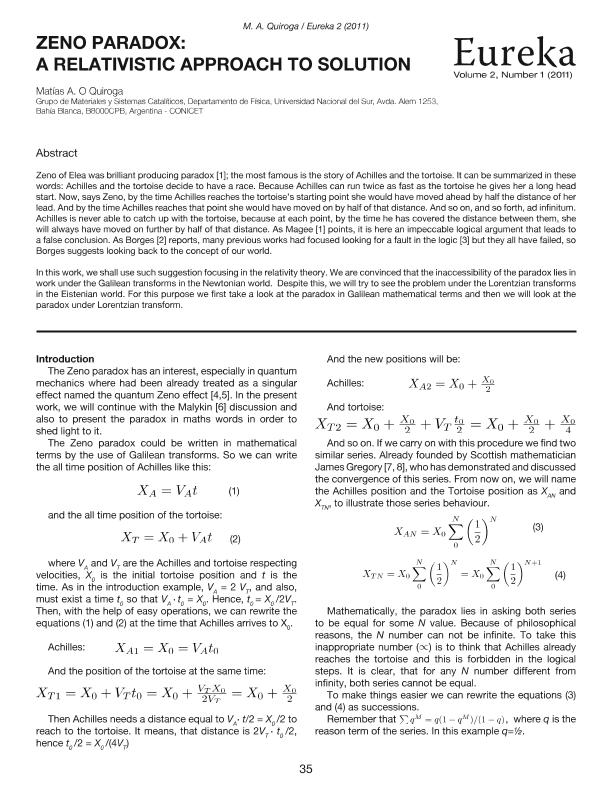Artículo
Zeno paradox: A relativistic approach to solution
Fecha de publicación:
05/2011
Editorial:
Univertity of Alberta
Revista:
Eureka
ISSN:
1923-1512
e-ISSN:
1923-1520
Idioma:
Inglés
Tipo de recurso:
Artículo publicado
Clasificación temática:
Resumen
Zeno of Elea was brilliant producing paradox [1]; the most famous is the story of Achilles and the tortoise. It can be summarized in these words: Achilles and the tortoise decide to have a race. Because Achilles can run twice as fast as the tortoise he gives her a long head start. Now, says Zeno, by the time Achilles reaches the tortoise’s starting point she would have moved ahead by half the distance of her lead. And by the time Achilles reaches that point she would have moved on by half of that distance. And so on, and so forth, ad infinitum. Achilles is never able to catch up with the tortoise, because at each point, by the time he has covered the distance between them, she will always have moved on further by half of that distance. As Magee [1] points, it is here an impeccable logical argument that leads to a false conclusion. As Borges [2] reports, many previous works had focused looking for a fault in the logic [3] but they all have failed, so Borges suggests looking back to the concept of our world. In this work, we shall use such suggestion focusing in the relativity theory. We are convinced that the inaccessibility of the paradox lies in work under the Galilean transforms in the Newtonian world. Despite this, we will try to see the problem under the Lorentzian transforms in the Eistenian world. For this purpose we first take a look at the paradox in Galilean mathematical terms and then we will look at the paradox under Lorentzian transform.
Palabras clave:
Zeno Paradox
,
Theroy of Relativity
Archivos asociados
Licencia
Identificadores
Colecciones
Articulos(IFISUR)
Articulos de INSTITUTO DE FISICA DEL SUR
Articulos de INSTITUTO DE FISICA DEL SUR
Citación
Quiroga, Matías Abel Oscar; Zeno paradox: A relativistic approach to solution; Univertity of Alberta; Eureka; 2; 1; 5-2011; 35-36
Compartir
Altmétricas




